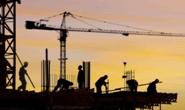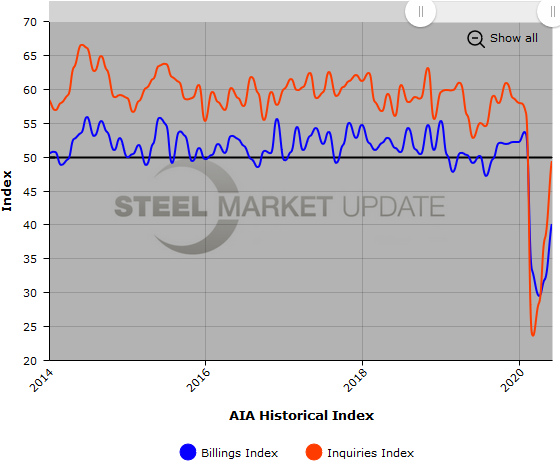Economy

ABI Still in Contraction But Stabilizing in June
Written by Sandy Williams
July 22, 2020
Demand for design services by architectural firms showed signs of stabilizing in June. The Architecture Billings Index rose 8.0 points to post a score of 40.0. A score of 50 is the neutral point between contraction and expansion.
“While business conditions remained soft at firms across the country, those with a multifamily residential specialization saw the most positive signs,” said American Institute of Architects Chief Economist Kermit Baker. “Unfortunately, conditions at firms with a commercial/industrial specialization are likely to remain weak for an extended period of time, until hospitality, office and retail facilities can fully reopen and design demand for this space begins to increase.”
The index by sector showed the three-month moving average for billings in multi-family residential at 44.7, institutional at 38.9, mixed practice at 35.3 and commercial/industrial at 30.2.
Billings in regional areas, also calculated on a three-month moving average, improved slightly in June, although remaining in contraction. Regional averages rose by single digits in most regions with the the Midwest at 36.8, the Northeast at 34.2 and the South at 35.9. The billings index for the West rose 0.8 points to a score of 36.8.
The project inquiries index was 49.3 and the design contract index posted at 44.0.
Below is a graph showing the history of the Architecture Billings Index and Inquiries Index. You will need to view the graph on our website to use its interactive features; you can do so by clicking here. If you need assistance logging in to or navigating the website, please contact us at info@SteelMarketUpdate.com.


Sandy Williams
Read more from Sandy WilliamsLatest in Economy

Steel, manufacturing, and union groups divided on S232 tariffs
Domestic steel trade associations, manufacturing groups, and the United Steelworkers (USW) union had mixed reactions to the implementation of new Section 232 tariffs without exclusions on Wednesday. Trade groups representing steel mills broadly supported President Trump’s actions, while the USW and some groups representing manufacturers were more critical. AISI Kevin Dempsey, president and CEO of […]

CRU: Will US tariff policy be transactional or transformational?
The Trump 1.0 tariffs appeared to have little positive effect on the US manufacturing, partly because they hurt export competitiveness.

Beige Book finds mixed demand trends, tariff concerns
Manufacturing activity exhibited slight to modest increases across a majority of districts. However, manufacturers expressed concerns over the potential impact of looming trade policy changes between late January and February.

Construction spending drops marginally in January
Construction spending edged down slightly in January, slipping for the first time in four months. The US Census Bureau estimated spending at a seasonally adjusted annual rate of $2,196 billion in January, down 0.2% from December’s downward revised rate. The January figure is 3.3% higher than a year ago. January’s result, despite the slight erosion, […]

ISM: Manufacturing expansion slowed in February
The Manufacturing PMI registered 50.3% in February. That’s 0.6 percentage points lower compared to the 50.9% recorded in January.
